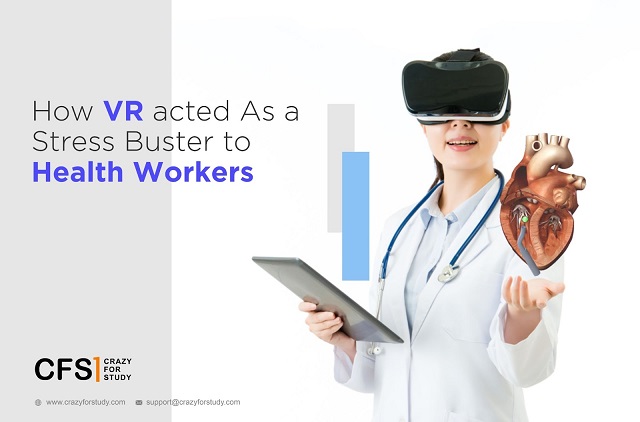All of us are quite familiar with the word “Metaverse”. But, more often than not, we all have our own way of defining it. Simply the term Metaverse defines a digitally linked universe that permits users to transverse virtual space in digital avatars.
In the future, the Metaverse is projected to present itself through virtual reality (VR). It is a substitute, digital world that can be used for a range of individual and enterprise purposes. VR is fixated on forming a digital sense of presence which experts agree will be vital to creating an experience and retaining users.
Some Major examples are Meta (previously known as Facebook), Microsoft etc. Nike is planning to sell virtual sneakers, reports claim.
Hybrid offices, video games, video-based learning, online assignment help, and online social groups are just a few of the ways in which a great part of our lives is consumed in the digital universe.
Role of VR and Metaverse in Stress Reduction
Besides helping tech companies build their empire and make profits, VR and Metaverse are also helping health workers reduce stress levels.
With the onset of the pandemic, the most affected communities were the doctors and their helper’s nurses. Day and night, they have toiled hard to save precious lives. Initially, nobody knew what the virus was, its effect, and the repercussions.
Doctors and nurses have spent hours first to learn about the disease and then find a cure for the same. They have not considered their personal health, family and other important things in these times. They were serving humanity.
In these stressful times, one thing that helped them cope with the uncertainty and keep their sanity intact was Virtual Reality (VR).
Let us take a real-life example.
One instant, Michele Sprague is attending to the demands of her job as a nurse manager at Boone Health.
Next, she is on a beach in New Zealand.
This activity is a part of a venture with Columbia-based company Healium to obtain the effect of mind-powered virtual reality and neurofeedback to enhance mood and decrease stress among front-line health care employees.
Sprague describes it as “Incredible.” “You absolutely feel like you are walking on the beach. This study was conducted on 100 Boone Health employees for a project published in Frontiers in Virtual Reality Medicine.
The healthcare staff, who partook willingly, were fixed with a brain-sensing head strap and virtual reality goggles to register their stress-related brain design. They were then engaged in a setting through virtual reality that reacts to the user’s biometric information, altering the scene if the brain becomes stressed.
Helium’s original technology attunes stress-relieving immersive media content that the wearer created on their brain patterns measured by electroencephalogram, an exam or record of brain activity.
How It All Began
Contributors were virtually sent to a beach in New Zealand for just over four minutes, said Healium CEO Sarah Hill. A recited, directed meditation led them through breathing exercises with emphasis on various body parts.
After the small session, the workforce was verified as having enriched moods, improved feelings of tranquility and joy, and reduced tension.
“We need to find drugless, non-harmful coping mechanisms,” Hill said of the importance of the technology. “It is a powerful tool to be able to see your brain patterns and learn to self-regulate. It’s all just a reminder that our thoughts do have power to control things not only in the virtual world, but in the real world as well.”
When engrossed in the “virtual break,” contestants observe their own brain activity using a firefly that varies in size subject to the activity, she said.
The firefly goes to the top of the screen and becomes big when the member presents signs of reduced stress.
When the firefly gets smaller and falls to the bottom, the screen shows red color, indicating a rise in stress. It acts as a calm cue for the contestant to focus on their breathing and the scene.
Before each sitting for the study, members completed a survey of their mood and were asked to fill out the same study at the end of the experience. Applicants, most of whom are nurses, reported feeling much calmer, labeling the experiences as “beautiful” and “calming,” Hill said.
There were visible alterations in staff members after using the device, with a decline in rage, despair, and anxiety, Sprague said
The virtual reality kits were donated to Boone Health for the workforces to continue to use.
Now, they are permitted to practice any of 35 experiences, including waterfalls, forests, space and up in the clouds, with sittings of up to 20 minutes.
Sprague said that the headphones are alternated each week between wards in the hospital for personnel to operate.
Summing up
Given the number of people affected due to the pandemic and other diseases, the potential health impacts, and the critical role healthcare workers play in society, it’s essential to identify and advance stress-management approaches that can be implemented within a healthcare environment.
Crazy for Study is one of the thriving educational platforms to learn more about the science behind this tool.


